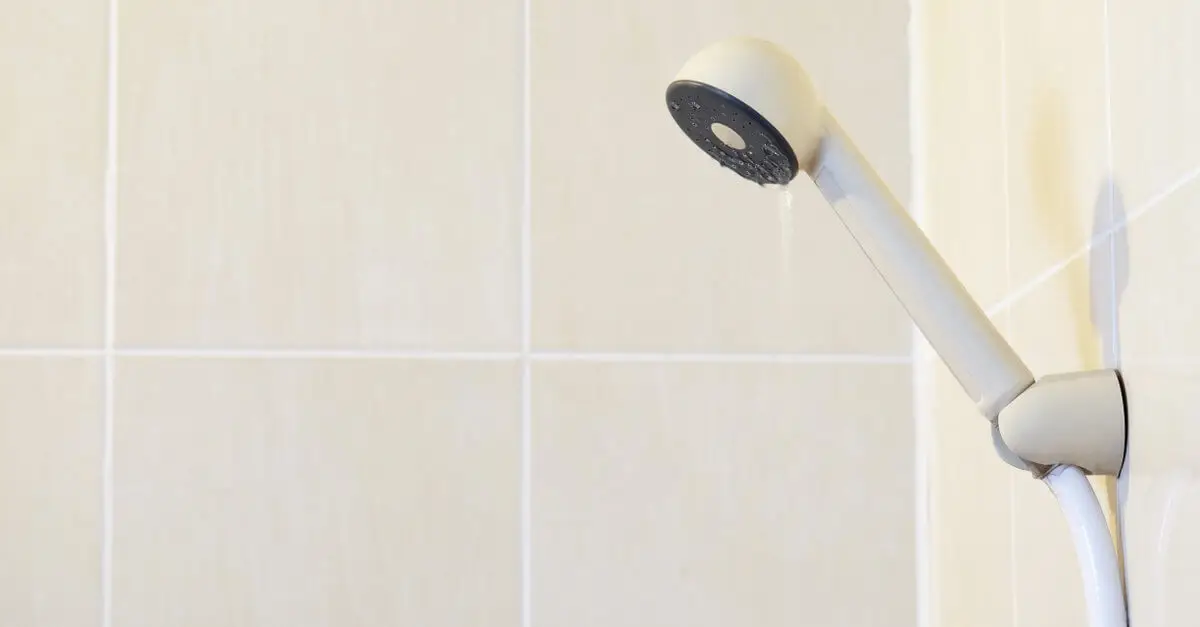
Does your leaky shower head wake you up at night or appear in your nightmares - or more likely do you tend to forget about it the second you step out of the shower in the morning? If your shower head is leaking, it is important to address it as soon as possible. It may seem like a nuisance that you could fix with a few tweaks, but in reality, a leaky shower head might indicate significant damage that requires certified plumbing experts.
Before we delve into why your shower head is leaking, it’s important to understand its overall anatomy.
Shower Head
Shower heads come in various shapes—ranging from circular to square, and different types, such as chrome, copper, or brass. Modern ones have improved designs that help us better manage our water usage and to avoid leaks. Shower heads have two major components, the arm, and flange (escutcheon). The arm is a metal tube that starts in the pipes and stretches through the wall into the shower head, acting as a channel for water flow. Flanges cover the hole where the arm connects to the rough pipe in the wall, serving as a finished design.
Shower Valve
The valve controls water temperature and movement from your head (including tub spout and handheld). It’s usually installed behind your wall. There are two types of shower valves:
- Pressure-balanced: Have you experienced inconsistent water temperature and low pressure during a shower because someone has flushed the toilet? Pressure-balanced valves help balance water pressure to compensate for a lack of cold or hot water. This way, you have a stable water temperature when you’re in the bath. This type is cost-efficient and most common in households.
- Thermostatic: This valve can control water pressure and temperature consistently. It allows you to pre-set your desired temperature prior to stepping into the cubicle or tub. It’s an energy-efficient option, as it conserves water, making it an excellent choice for the environment. The only downside is that it’s expensive.
Water Supply Pipe
Water arrives via two pipes, one for pressurized water supply (hot and cold) and our drain line connected to the sewer line. Depending on how old your plumbing system is, your water supply line could be made of galvanized steel. Copper is a more common option, along with PVC. If you detect old steel pipes, we recommend hiring a plumbing expert to inspect them for you. Signs of corroded pipes include discolored water and leaks.
Shower Cartridge
A cartridge is one of the main components of four other valves within a faucet. It has holes that regulate water flow and temperature as you turn the handle and also gives you more control than standard faucets.
Note: If it ever wears out, it won’t operate properly, leading to leaks and seeping water. Rings around the valve might need to be replaced, too, because they break or corrode over time. It can also fail if there’s an imbalance in water pressure between hot and cold water. Because it’s housed within the valve, it can easily break.
Shower Hose
The hose connects the tub to the shower outlet. We recommend paying attention to its quality and design. Ideally, your hose is certified for drinking water and doesn’t rinse out harmful substances. We recommend “kink-resistant” material to ensure that water is always flowing.
Note: If you have a leaky hand-held shower head, you might have a damaged head gasket or an improper head and hose connection. Find the exact leak location if you have a hand-held leaky shower head. You might be able to pinpoint the cause quickly and repairs could only take a few minutes.
Shut Off Valves
They regulate water flow into the pipes. When shut-off valves are open, they allow the free flow into the pipes, whereas when they’re shut, the whole water flow is shut off. It may be tricky to locate them in some bathrooms, so if they’re not underneath the sink, they might be in the basement directly below your bathroom.
Keep in mind that the corresponding bath pipes are enclosed by walls and floors, making it difficult to access them when they need repair. But the code requires that shut-off valves are accessible.
Why is my Shower Head Leaking?
The causes of a leaky shower head can vary even if we pay close attention to the details. But because we can’t see through walls, we can’t exactly determine whether we have worn, damaged inner seals or o-rings. Next, we will cover the common reasons for a persistently dripping showerhead.
Broken Shower Valve - How to Fix an In-Wall Faucet Valve?
Wall-mounted faucets are a popular design for showers and tubs. This type of faucet has numerous rubber seals that will wear over time and even crack. If you have a dripping shower head, it’s likely your faucet seals are corroded.
While you can repair some of them, chances are you’ll need a new one. You will need some appropriate plumbing tools to fix a broken valve.
- A brand-new faucet valve
- Screwdrivers
- Pliers
- Utility Knives
- Set of Allen wrench
- Mini hacksaw
With those tools at hand, there are some important preparatory steps, which include:
-
Turn off the water supply/shut off valve: Switching off your water will prevent a leak
-
Cover the drain, so no tools fall down the drain
Next, we determine if we’re fixing a two- or one-valve system. By doing that, we check if the drip is warm or cold. If it’s warm, it’s likely the hot side.
-
Remove the head faucet handle with its relevant hex key, other parts should be screwdriver friendly. Be careful not to lose any parts.
-
Remove trim plates (face plates) & sleeves that cover the valve and body. Soak the trim in some vinegar to remove any mineral buildup.
-
If you see the valve & body in the opening of the wall, unscrew the stem from the body with an adjustable wrench.
Note: The hole should be about 12 inches wide and needs to be widened a little. If you have tile or glass walls, you could cut the hole until it’s the right size, use the trim plate as your guide. Otherwise, your local plumber will happily replace the faucet valve for you.
-
Remove the clip that holds the valve in place with your pliers. If your clip is in good shape, you can re-use it to install a new cartridge.
Note: If retainer nuts are holding your valve in place, you’ll need a wrench to unscrew it.
-
Use pliers to pull out the valve by gripping the cartridge’s metal end.
-
Use pliers to insert the new cartridge. You might need to wiggle it until it sits in place properly.
Important: Ensure the cartridge is the correct size.
-
When done, use pliers to put the metal clip back on the valve. It should fit in the same position as the old one.
-
Then, connect the valve to the water supply pipe.
Note: While you’re there, it’s worth inspecting your pipes, making sure there is no corrosion and rust.
-
When you’ve finished replacing your valve, you can reinstall the trim plate, sleeve and handle.
-
Turn your water supply back on and run the shower for 30 seconds to test for leaks. Turn off and observe to see if you still have a leaky shower head. If no drip occurs, use caulk around the entire baseplate to seal it to the wall.
There are many components to a leaky shower head. When you attempt to fix it yourself, we encourage you to do it with care. If you are stuck halfway through or notice pipe damage while inspecting the valve’s surroundings, do not hesitate to call an expert plumber for help. Most provide 24/7 emergency service, so you won’t have to wait till next week to get it fixed.
A leaky head can triple your electricity bill; therefore, we recommend not waiting
Need An Expert to Service Your Leaky Shower Head?
Whether you need a bathtub installation pro or a dripping shower head fixed, Mr. Rooter Plumbing provides quality service with effective results, using high-end technology and tools for your plumbing solutions. We are available 24/7 for emergency needs, so you can rest assured that you won't ever have to wait in line for service.
Give us a call to speak with our friendly customer service representatives about your needs or preventative plumbing solutions.

